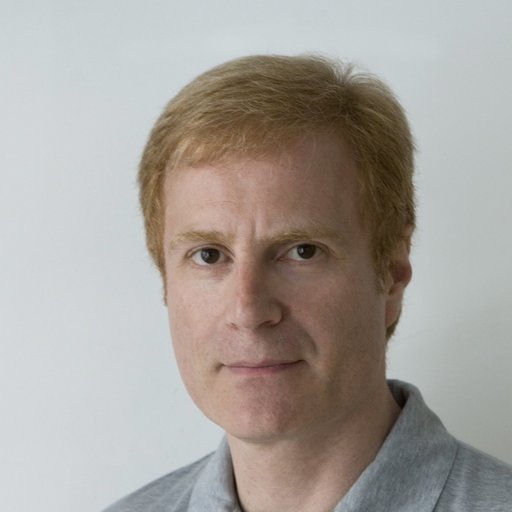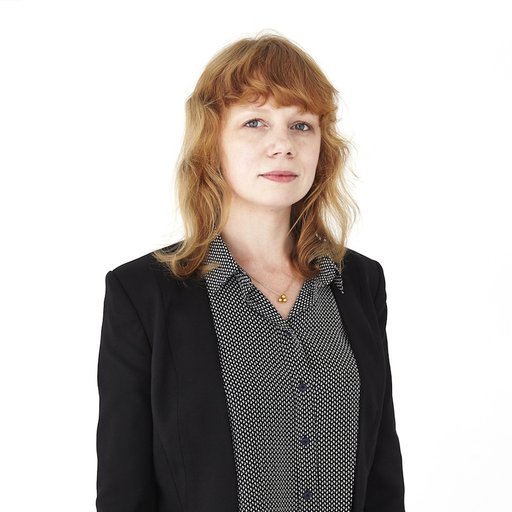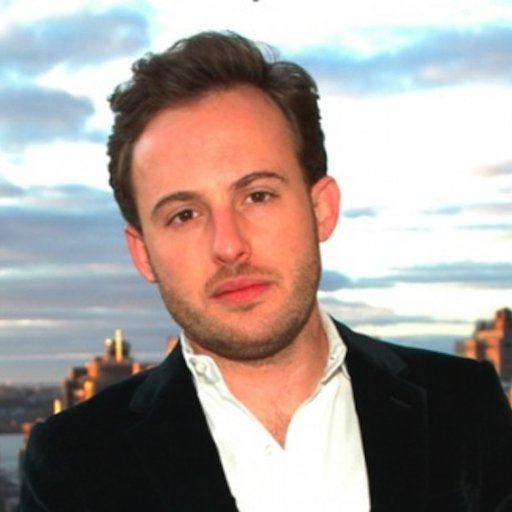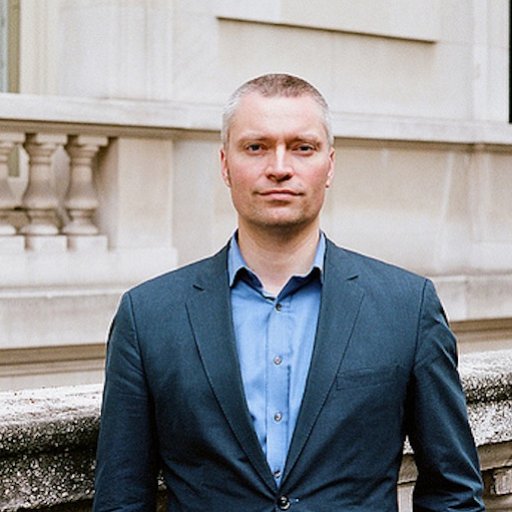What does Robert Rauschenberg have to do with a Japanese school for Ikebana flower arranging? Piet Mondrian with postwar abstraction in Venezuela? Jackson Pollock with Socialist Realism?
These unlikely intersections are just a few of the untold chapters of art history being uncovered by the Museum of Modern Art’s International Program, headed by Jay Levenson since 1996. A scholar of the Renaissance and a lawyer by training, Levenson has devoted his career to telling more inclusive stories about art from across the globe.
Although his position may sound like a very contemporary response to our globalized world, the museum created it in a different time. In 1952, at the height of the Cold War, MoMA founded the program to circulate and promote American art abroad. Whether the department was part of a covert CIA operation or merely a result of the museum’s spirited championing of new art... well, that's a debate for the pages of history.
Six decades on, the mission of the program is less nationalistic and more geared toward promoting a sense of the transnational interconnectedness in the art world. The Contemporary and Modern Art Perspectives program, better known as C-MAP, hosts scholarly workshops and finds travel funds for curators, with a focus on neglected subspecialties such as Fluxus art in Eastern Europe, modernism in Latin America, and time-based performance work in East Asia. Additionally, the International Program funds new translations of key art-historical texts in its "Primary Documents" series, while its study groups publish their findings on their website Post.
We sat down with Levenson to talk about reshaping MoMA’s permanent collection and global art’s challenge to the traditional tale of modernism.
When the International Program was founded in 1952, it had a very different mission from today, right?
In the early 1950s, there weren’t many modern art museums, and American art actually wasn’t very well known outside of the United States. It was felt to be MoMA’s primary responsibility to get its collection better known around the world. The museum always had a kind of proselytizing attitude—it was founded by three woman collectors who thought other museums were neglecting modern art.
And historically, it was the period of the Cold War. Whether or not plans were made in consultation with the CIA, I have no idea. Apparently, the old records ended up inside some mountain in the West. But I don’t think it matters. It’s clear the people who were running the program understood they were working in a world where the other major power was the Soviet Union. The accusation has been that they chose to promote American Abstract Expressionist art as a foil to Soviet Socialist Realism.
How had the department changed by the time you started in 1996?
It continued as a traveling exhibition program up until when I started. But by that point, there was a new interest in the world outside of Western Europe, and I was tapped into that. I had just done a show called “Circa 1492” for the National Gallery of Art on the world at the time of Columbus, which had an Asian part, a pre-Columbian Latin American part, and a European part, and it actually had work from Africa too. It was an eye-opener for me, and I thought, you know, this is something that I want to continue doing. I didn’t want to work wearing blinders.
How would you describe the effect of the department's new mission on the museum?
By exposing curators to things they didn’t know, we get them interested in ideas that they may not have felt they had the expertise to handle before. But really it’s encouraging tendencies that are there already.
And is this transforming the permanent collection?
All the departments have proposed related acquisitions. But to do that effectively, you need to understand how the newly proposed work is going to fit into the existing collection. That encourages going deeper into history rather than focusing on the contemporary. There is a general feeling that you need to come to grips with earlier periods—the 1960s through 1980s—to understand the contemporary. Also, the original collection’s quality is so high, you have to be very careful about what you add.
Did you read Holland Cotter’s article in the New York Times last month? Cotter writes, “I don’t know what it would take to get the global mix of voices in some of New York’s big rich art museums. If archeologist of the future unearthed the Museum of Modern Art as it existed today, they would have to assume that Modernism was a purely European and North American invention. They would be wrong. Modernism was, and is, an international phenomenon.”
I think these things take more time. As a critic, Cotter is right to push the point. But expanding the collection to tell a broader story is a gradual process. The look of the permanent collection is definitely going to change. It’s not something that can happen over night though. We started telling new chapters on the fourth and fifth floor permanent installations, such as in a gallery of geometric abstraction from Venezuela, Brazil, and Argentina and its relationship to Mondrian. In the meantime, I think the temporary exhibitions, like the upcoming Lygia Clark show, are going to tell some of the other stories. Our C-MAP research is also going online. For example, we digitalized this collection of documents from the Sogetsu Ikebana School in Japan, which Merce Cunningham and Robert Rauschenberg visited.
Is the goal to build an encyclopedic collection?
No, it is more trying to determine how to adapt the historical collection to a changing world. But it is clear that you can’t have the equivalent of what this collection was in the ’50s, where everybody looked to it as the collection. There are going to be specialized collections in different parts of the world that no one is going to be able to duplicate.
How does non-Western art challenge the story of modernism the museum traditionally told?
Everybody understands that the story has been insufficiently nuanced. In a way, at the time, it had to be. It takes awhile to understand how these things develop. At one point, when people would see a cubist work emerging from China decades after cubism was developed in Europe, the first thing they’d think is that it is some form of imitation. But, in fact, when you understand more of the cultural context of the intervening history, it’s never just imitation. The same style means something entirely different in another place. It’s never the case that you can simply say, which used to happen years ago, “Oh, it’s derivative, therefore, why would we be interested in it.”
Have you seen this understanding spread to other museums?
I see different museums focusing on different areas. The Tate is doing something similar to us but with quite a different approach, because they are focusing more on contemporary acquisitions. And then the Pompidou just did a reinstallation of the collection, bringing out all its non-Western holdings and borrowing other things. I’m not sure if Holland Cotter has reviewed it yet…. The Guggenheim is doing a lot of acquisitions too. So it is not just us—it’s inevitable.
Today quite a few museums seem to be reinventing the International Program's original mission by opening branches overseas. Has MoMA considered putting physical facilities abroad?
The idea always comes up, and we get invitations that we sort of look at. But our feeling is most places are better off coming up with their own institutions—that it’s difficult to come in and be as responsive to the needs of a community. Moreover, we get three million people a year now at this location; running a second location would be extremely difficult. It makes more sense for us to send exhibitions elsewhere in the world and continue with these research programs.
With so many different art nodes across the globe, how important is the New York art scene as a generative force?
It is still tremendously important. Museums are here, important collectors are here, and certainly all the global artists we are talking about would like nothing better than to have a show in New York. And I don’t imagine that it is going to change all that much. I mean, don’t forget that London has been the center of the auction world for some 300 years, so there’s no reason for things to change that quickly.
Nonetheless, the Chinese art market has moved back to China, though it was definitely a New York market for a while. So these things can change. I mean, the one thing that can’t change is where the established collections are.
But there are serious collections being established in Hong Kong at M+ and in Doha at the Qatar Museum Authority, among other places.
Most of those are contemporary collections though. In terms of historical collections, they are where they are—well, at least for the moment. Whether there can continue to be a real encyclopedic collection, when the world is changing so much, who knows. It is a really interesting moment because the old story of modernism is convincingly told, and it wasn’t as if you could develop it any further. The idea today is to integrate other stories into that older one.



























